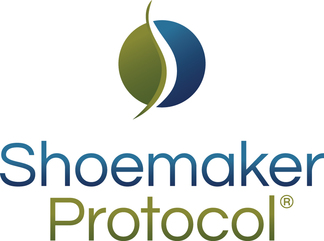Week of March 11, 2024

1/ Autism:
QUESTION: Is there any connection between water-damaged buildings and increased incidence of autism?
ANSWER: Exposure to WDB is not associated with autism although it will make autistic patients worse if they have CIRS.
2/ ADD & Autism
QUESTION: Do you have statistics regarding the prevalence of visual contrast sensitivity deficits in children with attention deficit and autism? I am a developmental optometrist. Also, is there a role to assess visual evoked potentials in these children?
ANSWER: To date, I have only evaluated 12 children with confirmed autism, understanding the case definition of autism is still based in psychiatric terms and not on objective biometric parameters. As far as attention deficit disorder goes, I see many children diagnosed with
this condition but when the inflammatory burden placed on the blood brain barrier in the central nervous system by innate immune activation is cleared, the ADD disappears. It is therefore hard for me to answer your question. Simply stated, if attention deficit disorder is a catch-all diagnosis in which children are placed in part due to lack of consideration in underlying mechanisms, then how can we
develop a meaningful pathophysiology? No physiology, no targeted cure. Dr. Norman Swartz sent me PAX gene tubes on two patients with autism. These assays will be run through the genomics program when funding is restored.
Regarding visual evoked potentials I would be more interested in pursing use of NeuroQuant in children as this would require 10 minutes of magnetic resonance imaging time and has provided a fingerprint showing physiologic disturbances in adults with mold. Here we will see distinctive fingerprints of microscopic interstitial edema in some areas of the brain and caudate atrophy. Similarly, with Lyme disease we see reduction of forebrain parenchyma size together with reduced putamen. Also, in Lyme we see increased
cerebellum and increased thalamus size as well. If these disorders are similar in adults and children then we expect to find central nervous system changes that can be readily treated and documented as the course of treatment proceeds.
3/ VOCs (Volatile Organic Compounds)
QUESTION: Can being around VOC’s make you feel similar symptoms to CIRS, shortness of breath, vision issues, headaches, metallic taste, etc.?
ANSWER: Yes, VOCs can create similar symptoms following exposure. VOCs are not CIRS-related toxins. CSM does not remove VOCs. The first step is to identify and eliminate the source/s of the VOC problem, and also consider using Air Oasis’s I Adapt Air, air purification units which to my knowledge is the only sanitizing device that can remove VOCs from indoor air.
For more information on VOCs, check out the EPA’s VOC resources.
4/ CIRS symptoms, VOCs:
QUESTION: I am newly diagnosed with CIRS. I have the feeling of tremors/vibrations in my head when I entered rooms. Is this a symptom of CIRS?
ANSWER: Sensation of tremors and vibrations in your head is unusual. If you notice symptoms upon entering a given room the problem invariably is microbial VOCs. See the above question for more information on VOCs.
5/ Actinobacteria & CIRS relation
QUESTION: My understanding is that C. acnes and C. Tuberculostearicum are not a problem in a healthy individual but in someone with CIRS, they become a problem.
ANSWER: The problem with Actinobacteria is activation by inflammatory priming. It is not related to different strains.
6/ LPS endotoxins in digestive tract
QUESTION: Do the LPS endotoxins in a patient’s digestive tract contribute to a CIRS condition much like the endotoxins found in buildings?
ANSWER: No, LPS endotoxins from the GI tract do not contribute to CIRS. Possible reason why is the interaction of red blood cells with LPS and endothelial cells.
7/ Staying in hotels post-treatment
QUESTION: I am currently in the process of being treated using the protocol but am trying to understand what to expect for life after I have completed the protocol. Do most people find their resilience after the treatment to be similar to what it was before they had
CIRS. I am wondering if one- or two-night stays in a hotel that may be water-damaged likely cause problems.
ANSWER: Susceptibility is based on two elements, one is HLA DR by PCR, which will not change and second is low MSH, which usually does not change. What this means is your susceptibility is likely to be a problem, especially if you are using hotels and airlines frequently.
Many CIRS patients do travel again with a few proactive measures in place, including taking CSM ahead of time and having it on hand. It is also helpful to do your advance homework, such as calling to ask the hotel’s maintenance manager or manager how old the building is and if it has had known water damage of any kind. If someone you know lives in the area, ask them to inspect the building, even check out a room on your behalf. Unfortunately, indoor pool areas and atriums can be problematic. You may also consider traveling with portable effective air filtration units.
You will have to gauge and monitor your own susceptibility level and relapse symptoms as each individual is unique, but with successful completion of the Shoemaker Protocol™ and use of VIP, many people have established a more tolerant foundation and with a little proactive planning are able to maintain their health.